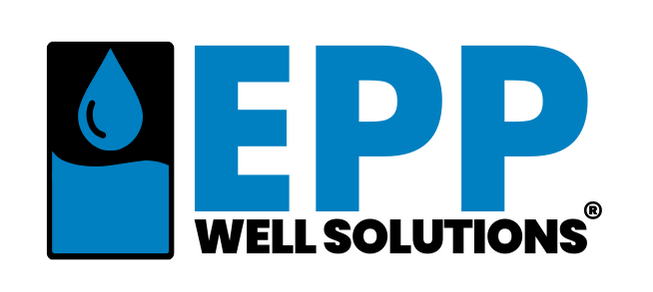Dealing with Seasonal Well Water Fluctuations
Seasonal well water fluctuations can disrupt life for homeowners and businesses relying on private wells. Abundant water in spring often shifts to shortages by late summer, affecting pressure and daily tasks like showering or irrigation. These variations challenge water availability and system performance, making it critical to manage them effectively. We’ll explore why seasonal fluctuations occur, how to prevent their impact, and practical solutions to ensure a consistent water supply year-round.
Why Seasonal Fluctuations Happen
Well water availability depends on groundwater levels, which shift with seasonal changes in rainfall and temperature. Unlike municipal systems with steady delivery, wells draw from aquifers that expand or contract throughout the year. Spring rains recharge aquifers, boosting well yields and pressure, while dry summer or fall months lower water tables, reducing output and causing shortages. These changes can weaken faucet streams, slow appliances, or introduce contaminants, complicating water management.
Several factors drive these fluctuations. Precipitation patterns are key—wet seasons increase groundwater, while dry spells limit recharge, especially in shallow aquifers. High water demand, such as summer irrigation, strains low-yield wells when yields are low. Hot temperatures and evaporation reduce surface water, depleting aquifers further, as seen in regions tracked by the U.S. Drought Monitor for 2024-2025. Aquifer depth and type also matter; shallow aquifers react quickly to rainfall changes, while deeper ones are stabler but slower to refill. Older or poorly designed wells, with shallow depths or inadequate casing, worsen issues by limiting access to reliable groundwater. Seasonal shifts can also affect water quality, with heavy rains introducing bacteria or dry periods concentrating minerals, clogging systems and reducing flow.
Preventing Seasonal Fluctuations
Proactive steps can reduce the impact of seasonal changes, ensuring a reliable water supply. Regular well maintenance is essential—check the pump, casing, and screens yearly for wear or clogs to maintain flow. Monitoring water usage prevents overloading the well during dry months; spacing out tasks like laundry or irrigation avoids pressure drops. Testing water quality, especially after heavy rains or dry spells, catches contaminants like bacteria or minerals that clog pipes, as recommended by the EPA. Maintaining the pressure tank stabilizes pressure; verify its air charge annually to keep it functioning. Avoiding over-pumping is crucial—extracting water too quickly during low-yield seasons depletes the aquifer, so a pump controller or a system like the Well Harvester helps. Planning for seasonal trends, such as reducing use in summer, aligns consumption with well capacity.
Managing and Fixing Fluctuations
When seasonal fluctuations cause low water levels or pressure, quick action restores stability. Start by diagnosing the issue. Measure water pressure with a gauge at a faucet—below 40 PSI indicates a problem. Note if shortages align with high usage or specific seasons, and consider a flow test to gauge output. Check components like filters, pumps, or pipes for clogs, especially after heavy rains. Test water quality to rule out contaminants affecting flow, and assess whether demand, like summer sprinklers, exceeds supply.
Immediate fixes depend on the cause. Cleaning clogged screens, filters, or pipes removes sediment or minerals, while a water softener addresses hard water. Adjusting or replacing a faulty pressure tank bladder stabilizes pressure. Fixing leaks in pipes or fittings prevents water loss, and servicing the pump—cleaning or replacing parts—restores flow. Reducing demand during dry seasons, like limiting irrigation, also helps.
For wells with recurring seasonal issues, upgrading the system is the best approach. The Well Harvester from Epp Well Solutions is tailored to manage these challenges effectively.
The Well Harvester: A Year-Round Fix
The Well Harvester is a low-yield well water storage system designed to ensure consistent water supply and pressure, regardless of season. It harvests water at a rate matching the well’s recharge capacity, storing it in tanks with capacities from 215 to 430 gallons or more. Unlike traditional setups that risk over-pumping during dry months, the Well Harvester uses smart technology to protect the well and aquifer. Its features include automatic yield adjustment to prevent shortages, a booster pump for steady 60 PSI pressure, expandable storage for peak demand, a digital interface showing real-time water levels, and a compact, durable design.
The Well Harvester manages seasonal fluctuations by storing water during high-yield seasons, like spring, for use in low-yield periods, like summer. For a household needing 300 gallons daily but facing a 2 GPM well in August, the system draws from stored water, maintaining pressure for showers or laundry. Its booster pump eliminates pressure fluctuations, and the digital display simplifies monitoring, ensuring preparedness for seasonal dips.
When the well’s output slows, it delivers stored water with consistent pressure, preventing weak flows or outages. This approach can extend the well’s lifespan by avoiding over-pumping, a common issue during low-yield seasons.
Finding Professional Support
For complex needs, like selecting or setting up the Well Harvester, consult a local well professional. Epp Well Solutions provides guidance on choosing the right system for your well’s seasonal performance, ensuring a seamless solution (Epp Well Solutions).
Exploring Advanced Options
If seasonal fluctuations remain severe despite maintenance and upgrades, consider advanced solutions. Hydrofracturing, which uses high-pressure water to open aquifer fractures, may boost yield but costs $2,000 to $10,000 with no guaranteed success. Drilling a new well in a deeper or better location could improve stability, though high costs ($10,000-$50,000) and risks make it less appealing. For most low-yield wells, the Well Harvester offers a cost-effective, dependable fix, stabilizing supply without the uncertainties of other methods.
Seasonal well water fluctuations can challenge well owners, but informed strategies ensure a steady supply year-round. Regular maintenance, careful water use, and quality testing prevent issues, while cleaning components or upgrading with the Well Harvester addresses low yields and pressure drops. The Well Harvester transforms seasonal management by storing water intelligently and delivering consistent flow, eliminating shortages.


